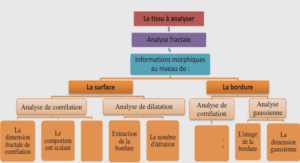3.REFERENCES
3.1NORMATIVE REFERENCES
3.2INFORMATIVE REFERENCES
4.DEFINITIONS, ABBREVIATIONS AND CONVENTIONS
4.1DEFINITIONS
4.2ABBREVIATIONS
4.3CONVENTIONS
5.INTRODUCTION
6.PPG OPERATIONS
6.1PUSH SUBMISSION PROCESSING
6.2RESULT NOTIFICATION
6.3PAP STATUS QUERY
6.4DELIVERY CANCELLATION
7.CLIENT ADDRESSING
7.1CLIENT ADDRESS FORMAT
7.2CLIENT ADDRESS EXAMPLES
8.STATIC CONFORMANCE REQUIREMENTS
8.1PUSH PROXY GATEWAY FEATURES
Scope
Wireless Application Protocol (WAP) is a result of continuous work to define an industry-wide specification for developing applications that operate over wireless communication networks. The scope for the WAP Forum is to define a set of specifications to be used by service applications. The wireless market is growing very quickly and reaching new customers and providing new services. To enable operators and manufacturers to meet the challenges in advanced services, differentiation, and fast/flexible service creation, WAP defines a set of protocols in transport, session and application layers. For additional information on the WAP architecture, refer to “Wireless Application Protocol Architecture Specification” [WAP].
Document Status
This document is available online in the following formats:
• PDF format at http://www.wapforum.org/.
2.1 Copyright Notice
© Copyright Wireless Application Forum Ltd, 1998, 1999.
Terms and conditions of use are available from the Wireless Application Protocol Forum Ltd. web site at
http://www.wapforum.org/docs/copyright.htm.
2.2 Errata
Known problems associated with this document are published at http://www.wapforum.org/.
2.3 Comments
Comments regarding this document can be submitted to the WAP Forum in the manner published at http://www.wapforum.org/.
References
Normative references
[ABNF] “Augmented BNF for Syntax Specification: ABNF », D. Crocker, Ed., P. Overell. November 1997,URL:http://www.ietf.org/rfc/rfc2234.txt
[HTTP] “Hypertext Transfer Protocol — HTTP/1.1”, R. Fielding, et al., June 1999.
URI: http://www.ietf.org/rfc/rfc2616.txt
[ISO8601] “Data elements and interchange formats – Information interchange – Representation of dates and times”, International Organization For Standardization (ISO), 1988-06-15; and “Data elements and interchange formats – Information interchange – Representation of dates and times, Technical Corrigendum 1”, International Organization For Standardization (ISO) Technical Committee ISO/TC 154, 1991-05-01.
Informative references
[PushArch] “WAP Push Architectural Overview”, WAP Forum, Ltd.,08-Nov-1999,URI: http://www.wapforum.org/
[RFC2396] “Uniform Resource Identifiers (URI): Generic Syntax”, T. Berners-Lee, et al., August 1998.URI: http://www.ietf.org/rfc/rfc2396.txt
[WAP] “Wireless Application Protocol Architecture Specification”, WAP Forum, 30-Apr-1998.URI: http://www.wapforum.org/
Definitions, Abbreviations and Conventions
Definitions
The following are terms and conventions used throughout this specification.
The key words “MUST”, “MUST NOT”, “REQUIRED”, “SHALL”, “SHALL NOT”, “SHOULD”, “SHOULD NOT”,“RECOMMENDED”, “MAY”, and “OPTIONAL” in this document are to be interpreted as described by [RFC2119].Application – A value-added data service provided to a WAP Client. The application may utilise both push and pulldata transfer to deliver content
Application-Level Addressing – the ability to address push content between a particular user agent on a WAP client and push initiator on a server.
Bearer Network – a network used to carry the messages of a transport-layer protocol between physical devices.
Multiple bearer networks may be used over the life of a single push session.
…..
Cours réseaux informatiques (220 KO) (Cours PDF)






